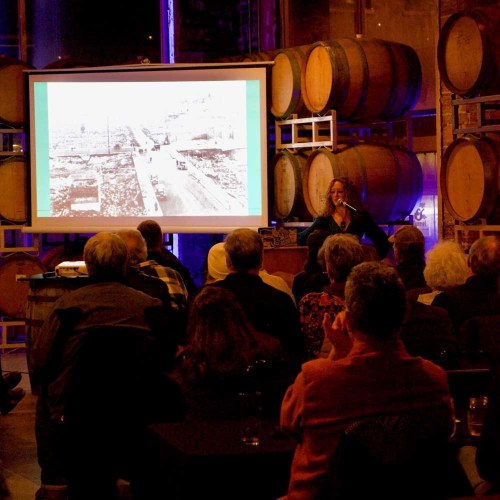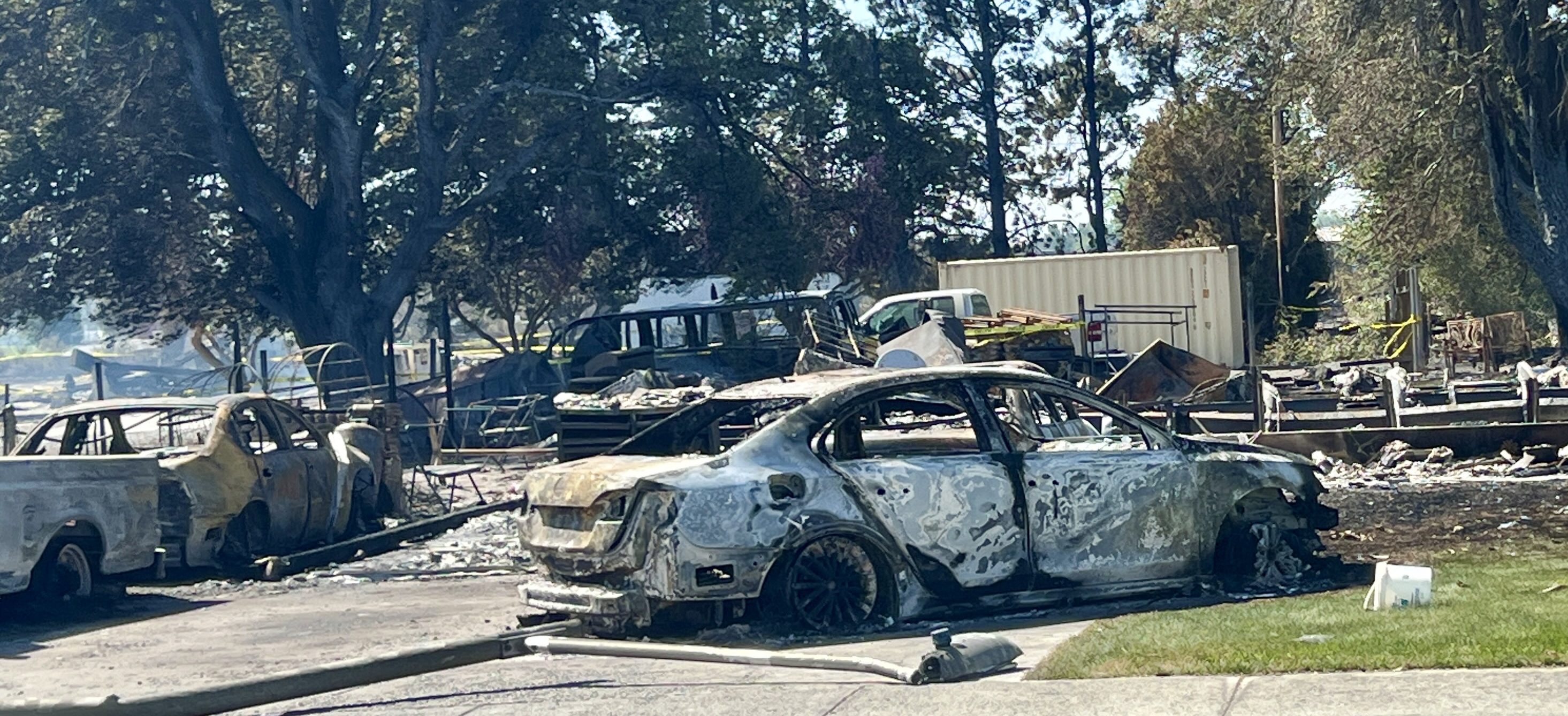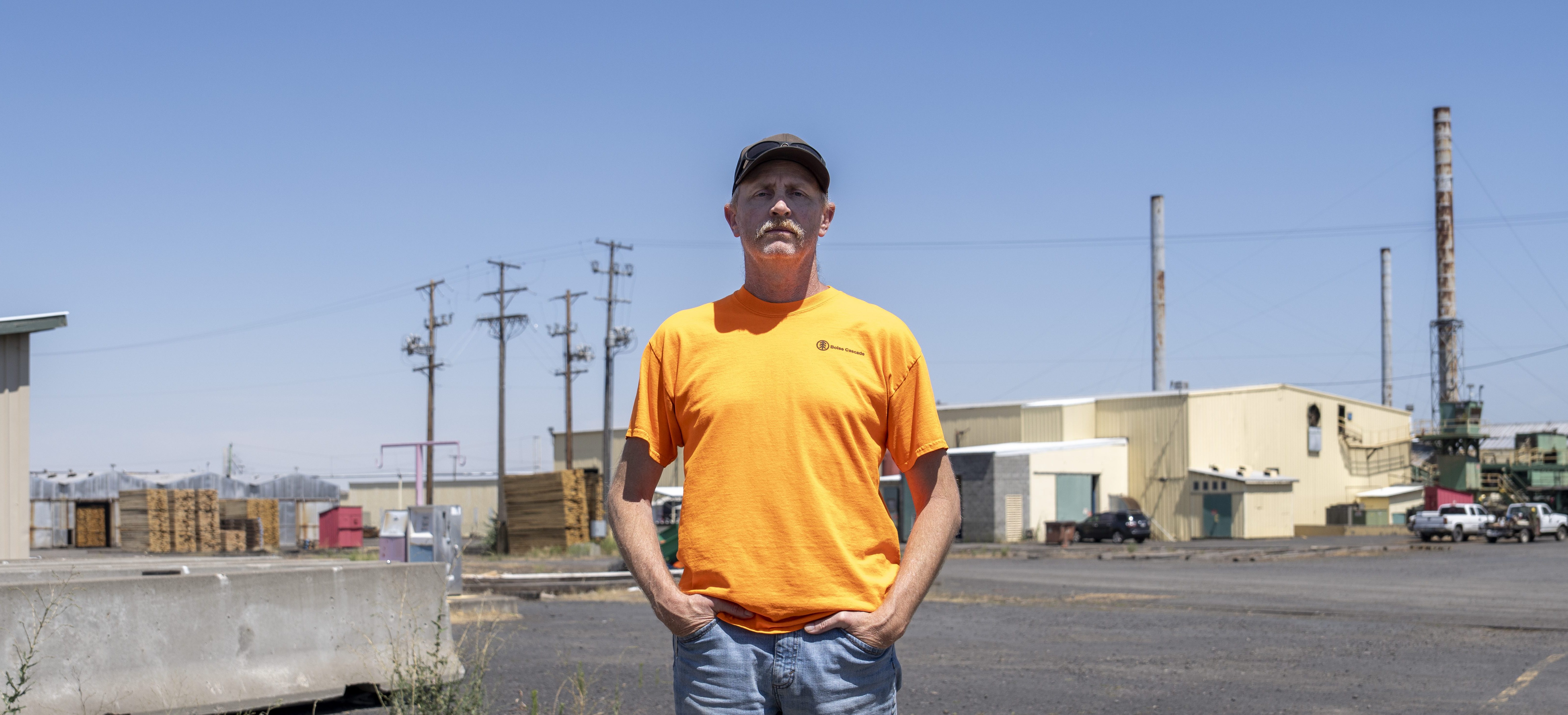Panel commemorates the Great Astoria Fire of 1922
Published 11:00 am Friday, December 9, 2022

- Jessamyn West, the executive director of the Astoria Downtown Historic District Association, during a presentation Thursday, Dec. 8, 2022, discuss the rebuilding efforts following the Great Astoria Fire of 1922.
ASTORIA — On the 100th anniversary of the Great Astoria Fire of 1922 that destroyed most of downtown, residents gathered at the Lovell Showroom at Fort George Brewery to hear from local panelists about the history and impact the fire had on Astoria.
Panelists included Brian McCarthy, fire marshal and emergency management deputy chief at the Astoria Fire Department; Chelsea Vaughn, curator for the Clatsop County Historical Society; Jaime Lump, administrative assistant at the Lower Columbia Preservation Society; and Jessamyn West, the executive director of the Astoria Downtown Historic District Association.
Trending
The presentation was Thursday, Dec. 8, in partnership with Fort George Brewery and the Columbia Forum.
McCarthy spoke about how the fire in the early morning hours on Dec. 8, 1922, quickly spread and the tactics used to try and contain the fire’s reach.
McCarthy shared that a dredging operation was essential in stopping the fire. A dredging machine was brought into Astoria and parked on 14th Street to pump water out of the Columbia River.
Underground gas mains ruptured, causing fire to spread further. Simultaneously, all underground water mains failed.
“Without this dredging operation, pumping right on 14th Street, we’d never put the fire out on our own,” McCarthy said. “It would’ve just burned until it decided to burn no more.”
Vaughn focused on the Heritage Museum’s exhibit about the fire, “‘This Has Been A Terrible Day,’ The Great Astoria Fire of 1922,” as well as the personal accounts of those who lived through the disaster.
Trending
People were largely uninsured at the time, Vaughn said, which explained the motivation to save their items. Many of the personal accounts from the time of the fire also are from those who owned businesses in the area.
”While we have accounts such as these of people who had their businesses downtown, we have fewer accounts of people who actually lived there,” she said.
Around 2,000 residents lost their homes in the aftermath of the fire. One of the accounts from a downtown resident comes from the 75th anniversary in 1997, when Margaret Waisanen, who lived on 15th and Commercial streets, recounted how the fire left her, her mother and her younger sister with nothing.
“Everything was gone. The looters had taken it all. We had on only our nightgowns, coats and slippers,” Waisanen said.
In the aftermath of the fire, Waisanen’s family was taken in by an acquaintance, Vaughn said.
As part of her work at the Lower Columbia Preservation Society, Lump wanted “to find a way to get people interested in Astoria’s history and excited about historic preservation of these downtown buildings.”
With the 100th anniversary approaching, Lump decided to create a self-guided walking tour that would take participants through the path of the fire.
“In my opinion,” she said, “I don’t feel like you truly understand the buildings in downtown Astoria without knowing about the fire.”
Lump also noted several buildings that did survive the fire, including the Spexarth Building and the Young Building.
West spoke about the efforts to rebuild downtown. According to West, there was an “immediate mobilization” of the community. More than 200 businesses were destroyed after the fire.
Astoria’s YMCA became a hub for the community, West said, as the building survived and committees were able to meet in the space and mobilize.
”Everywhere you looked, there was food coming in from Portland, Seattle, support coming from as far away as San Francisco,” she said. “You had hotels in Seaside opening up to house people that had lost their homes.”
As rebuilding progressed, there were several goals in mind, which included affordability, strength and permanence. Streets needed to be widened, streets needed to be raised to allow basements under buildings and fire stops and buildings needed to be made of noncombustible materials.
Overall, West said, it is commonly estimated the process of rebuilding downtown took approximately 18 months.









